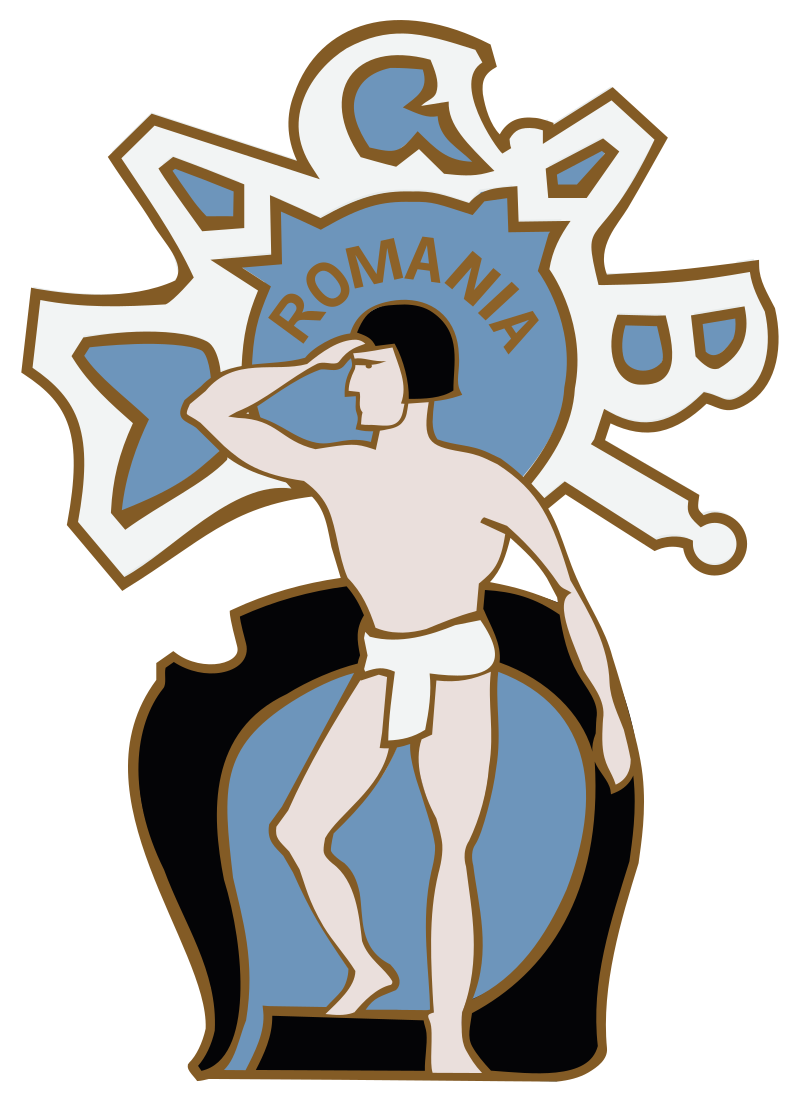
The ideological founder of the national Jewish athletic movement was Max Nordau (1849-1923) a physician, committed social Darwinist and co-founder of the Zionist Organization with Theodor Herzl. Nordau's call at the Zionist congresses in Basel in 1898 and 1901 for the creation of a Muskeljudentum (Muscular Jewry) to affect the regeneration of the physique and character of Jews, was of historical significance.
However, even before Nordau's call at the first Zionist congress in 1898, several Jewish sports clubs were founded: in Constantinople in 1895, in Bucharest in 1897, in Sofia in 1897, and in Berlin in 1898.
In the second half of the19th century, Romania witnessed a significant change in the attitudes to physical culture and to sport, both among the general and the Jewish population. The first Romanian sports association, Societatea Centrala Română de Arme, Gimnastica si Dare de Semn (The Central Romanian Association for Gymnastics and target practice), was founded in Bucharest in1867. In1894 the first Jewish sports association was founded in Bucharest. Three years later, on October 1,1897, Aurora, Societatea de gimnastica, scrima si lectura (Aurora, the association for gymnastics, fencing and literature) was founded in Bucharest. Aurora was significant for the development of Jewish sports and became a symbol of the aspirations of the Romanian Jews for the regeneration of body and spirit.
The Choral Temple congregation provided Aurora with several rooms for its activities, in a building on 20 Mircea Voda st. The association introduced disciplines, such as, football, fencing, boxing, athletics and canoeing, for both men and women. Besides, Aurora introduced physical education in Jewish elementary schools, and organized courses of foreign languages, vocal and instrumental music and literature. Although a Jewish association, Aurora welcomed all those who wished to participate, and many Romanian sportsmen joined the club. Many famous Jewish sportsman started their career in the framework of Aurora, among them, the boxing national champion Motzi Spakov, the table tennis national champion Nicu Naumescu, and world champion in the same discipline, Angelica Rozeanu.
In Romania, the first Maccabi society was founded by Zionist activists in Galaţi in 1908. Its office was in the same building in which the executive of the Zionist organization, and the Hatikva magazine were located, and the painter Reuven Rubin, Dr. Baruch Zosmer and Marcu Birenberg were among its founders.
After World War I, the Maccabi movementin Romania expanded, and clubs were founded in Bucharest, Iasi, Brăila, Piatra Neamţ, Roman and other cities. In a few years, Maccabi became the biggest youth organization in Romania, with tens of thousands of members. At the same time sports associations such as, Hagibor Cluj,Bar Kochba Satu Mare, Simson Sighet, Kadimah Timişoara,Ivria and Ahva Braşov were founded in Transylvania.
In 1918, the first Maccabi sports association was founded in Chişinău, and included, football, tale tennis, volleyball, theater and music. This rapid growth demanded a reorganization of Jewish athletics, and in 1920 a Maccabi Executive was established in order to coordinate the activities of the associations in the Regat, Bessarabia, Bucovina and Transylvania.
In 1921, at the Twelfth Zionist Congress in Karlovy Vari in Czechoslovakia, the World Maccabi Union was established, and until World War II, Romania was one of the East European members of the union along with Hungary, Czechoslovakia, the Baltic States, Poland, Bulgaria and Yugoslavia.
In 1932, there were 75 Maccabi associations for the cultivation of physical and spiritual education in Romania. Besides sports activities, Maccabi organized Hachsarot (Zionist collective) in different places in Romania.
During the years, Maccabi Romania organized many competitions, and Jewish athletes participated in both national and international competitions. Maccabi Bucharest was the first Jewish association to send a player, the goalkeeper Samuel Zauber, to the FIFA World Cup in Uruguay in 1930.
In 1932, Maccabi Romania organized the Maccabiah Games in Chişinău with participants from Iaşi, Chişinău, Focşani Cernăuţi, Călărasi, Tighina and Bucharest.The athletes participated in competitions featuring disciplines, such as athletics, volleyball, football and table tennis.
The most important competitions for the Romanian Jewish athletes were the Maccabia Games in Tel Aviv, in 1932 and 1935. At the first Maccabiain Tel Aviv, in 1932, participated 390 athletes from 19 countries. The Romanian delegation included 14 athletes, all of them from Cernăuţi, among them: Hornik, Rissen, Ella Fischer, Alma Munster, and Edi Gaster.
The second summer Maccabiah Games, in April 1935, were already under the more and more pressing shadow cast by the Nazi regime in Germany and reflected the dramatic deterioration in the situation of Europe’s Jews. Many participants remained in Palestine illegally after the games were over, and the summer games planned for 1938 were canceled because of the threat facing Europe’s Jews, the beginning of World War II in 1939, soon put an end to the activities of the movement in Europe.
In 1940, the anti- Jewish legislation in Romania,put an end to the activities of the Jewish sports associations. in spite of these measures, Maccabi members continued their activities illegally, and organized groups of self-defense and education, until in 1944, with the end of the war, they were allowed to legally renew their activities.
Even though at the beginning the communist regime in Romania allowed Maccabi's activities, in 1948were forbidden as Zionist organizations.
George Eisen, “The Maccabiah Games: A History of the Jewish Olympics” (Ph.D. diss., University of Maryland, 1979
Jacov Sobovitz, Fragmente din Istoria sportului evreiesc in Romania, Israel, 2021
H. Mairovici, "MUZICA,", Coordonare generală: Acad. Nicolae Cajal, Dr. Hary Kuller, Contribuția Evreilor din România la Cultură și Civilizație, Partea a V-a ARTE, SPECTACOLE, București, 1996, 392-393